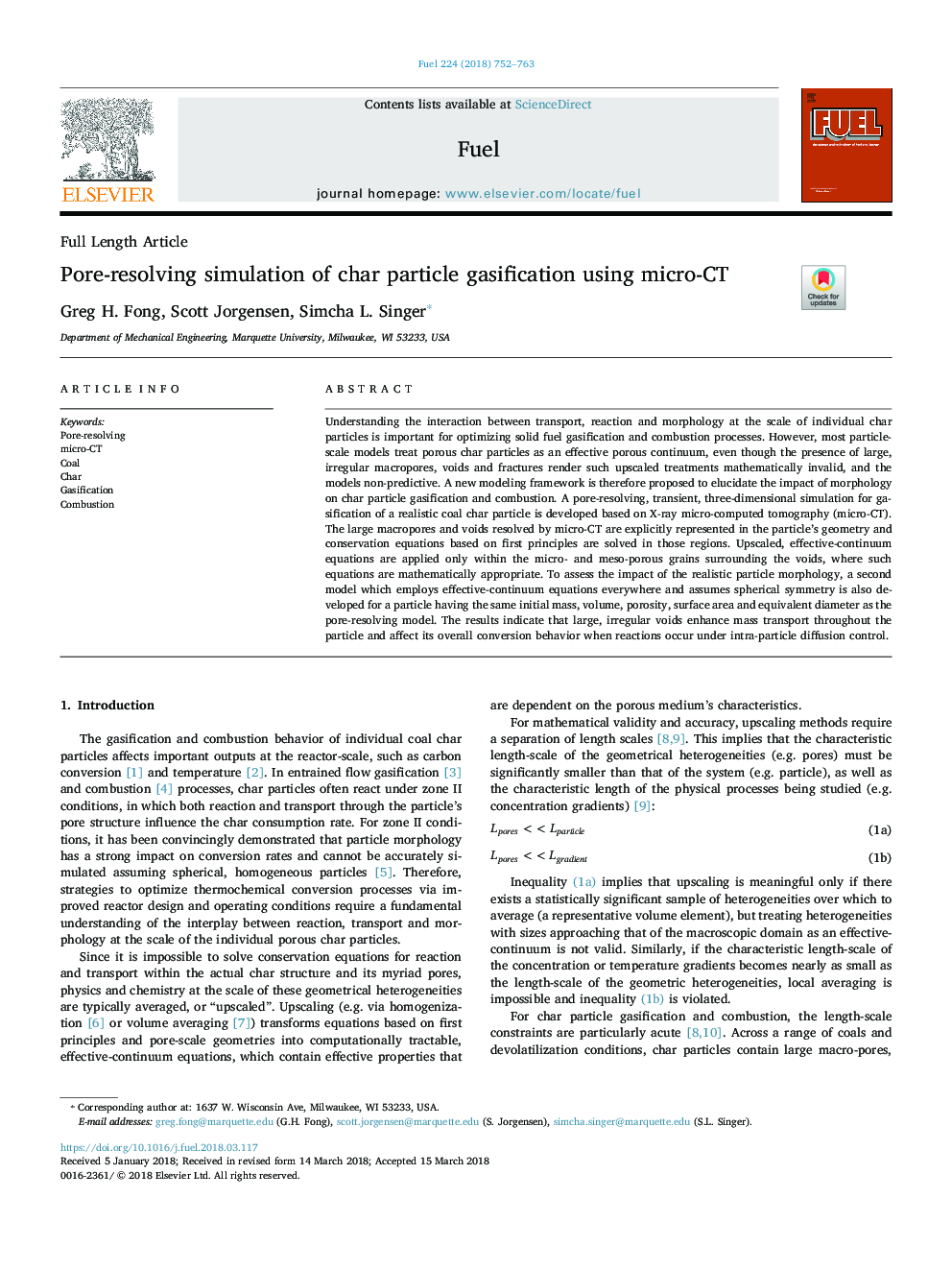| Article ID | Journal | Published Year | Pages | File Type |
|---|---|---|---|---|
| 6631227 | Fuel | 2018 | 12 Pages |
Abstract
Understanding the interaction between transport, reaction and morphology at the scale of individual char particles is important for optimizing solid fuel gasification and combustion processes. However, most particle-scale models treat porous char particles as an effective porous continuum, even though the presence of large, irregular macropores, voids and fractures render such upscaled treatments mathematically invalid, and the models non-predictive. A new modeling framework is therefore proposed to elucidate the impact of morphology on char particle gasification and combustion. A pore-resolving, transient, three-dimensional simulation for gasification of a realistic coal char particle is developed based on X-ray micro-computed tomography (micro-CT). The large macropores and voids resolved by micro-CT are explicitly represented in the particle's geometry and conservation equations based on first principles are solved in those regions. Upscaled, effective-continuum equations are applied only within the micro- and meso-porous grains surrounding the voids, where such equations are mathematically appropriate. To assess the impact of the realistic particle morphology, a second model which employs effective-continuum equations everywhere and assumes spherical symmetry is also developed for a particle having the same initial mass, volume, porosity, surface area and equivalent diameter as the pore-resolving model. The results indicate that large, irregular voids enhance mass transport throughout the particle and affect its overall conversion behavior when reactions occur under intra-particle diffusion control.
Related Topics
Physical Sciences and Engineering
Chemical Engineering
Chemical Engineering (General)
Authors
Greg H. Fong, Scott Jorgensen, Simcha L. Singer,
